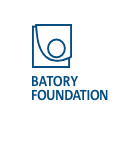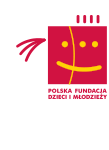Intersectional discrimination. Gender and vocational education.
Combating discrimination
Completed
mazowieckie
Warszawa
2015-03-02 - 2016-04-30
248 834,02 PLN
223 834,01 PLN
law, national policies, women
Project description
Women with basic vocational education suffer multiple discrimination on the Polish market for gender, relatively low education level, and economic reasons. Such discrimination takes on forms of lower remuneration offered to women than to men, of occupation-related gender stereotypes, and of limited female access to male-dominated professions. The offer of attractive vocational schools for girls is scarce. The magnitude of the problem has been proven in CEDAW Committee recommendations for the Polish government: to introduce career counselling for women and girls concerning the choice of education in non-traditional professions and vocational schools, and to implement the equal pay for equal labour principle.
The project purpose was to initiate system changes targeting equal labour market opportunities for women and men with basic vocational training by eradicating gender-related social stereotypes concerning occupational choices.
Main project accomplishments included public debate expansion to include topics of horizontal gender segregation in vocational schools and of negative consequences of the phenomenon for women on the labour market; system change initiation in education and employment policies; and co-operation between various social actors important to education and the labour market.
Focus studies were carried out alongside analyses of statistics concerning the circumstances of women with basic vocational education. Two reports on girls in the vocational education and women with basic vocational education on the labour market were published. Expert opinions and recommendations were drafted and distributed to decision-makers. The project closed with a conference.
Information concerning the project and the problem of multiple discrimination against women with basic vocational education reached around 500 persons directly. Related information reached a further several thousand individuals via traditional and social media.
We use the grant for capacity building
The project purpose was to initiate system changes targeting equal labour market opportunities for women and men with basic vocational training by eradicating gender-related social stereotypes concerning occupational choices.
Main project accomplishments included public debate expansion to include topics of horizontal gender segregation in vocational schools and of negative consequences of the phenomenon for women on the labour market; system change initiation in education and employment policies; and co-operation between various social actors important to education and the labour market.
Focus studies were carried out alongside analyses of statistics concerning the circumstances of women with basic vocational education. Two reports on girls in the vocational education and women with basic vocational education on the labour market were published. Expert opinions and recommendations were drafted and distributed to decision-makers. The project closed with a conference.
Information concerning the project and the problem of multiple discrimination against women with basic vocational education reached around 500 persons directly. Related information reached a further several thousand individuals via traditional and social media.




